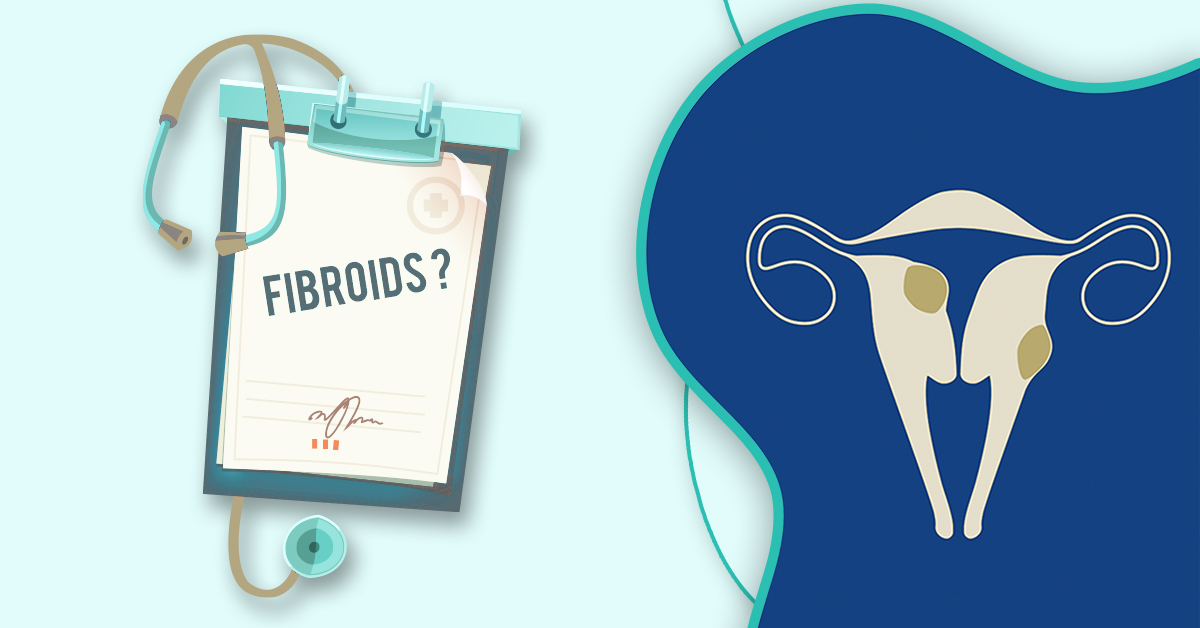Pregnancy and childbirth are an essential part of a couple's life. During this time, the mother and the child (children) are vulnerable to various medical complications and problems. From an early age, a mother gets ready to bear labor at some point in her life, but still, there can be last-minute complications too. Fibroids can prove to be a fatal complication during normal vaginal delivery. Apart from childbirth, they possess other significant health risks to a women's body.
What are Fibroids?
Fibroids are abnormal growths (like a tumor) that develop in or on a woman's uterus. Sometimes they tend to be too big that they cause severe abdominal pain and also heavy periods. Other than this, they don't have any symptoms at all. The growths are typically benign, not noncancerous.
The following names can also be used for fibroids:
- Leiomyomas
- Myomas
- Uterine Myomas
- Fibromas
Fibroids don't possess an increased risk of uterine cancer and rarely develop into cancer. They can be present in various types of sizes, from seedlings to bulky masses. During the seedling stage, they can be too small to be noticed by the human eye, while, in some cases, the bulky masses have grown to be big enough to distort and enlarge the uterus.
A woman can have a single or multiple fibroids. In the worst-case scenario, the multiple fibroids can expand the uterus so much that it can reach the rib cage and add weight. Many women have uterine fibroids at some point in their lives, but many don't even know about them as they don't cause any symptoms. Most of their fibroids are discovered accidentally by the doctors during a pelvic exam or prenatal ultrasound.
Different types of fibroids
Fibroids have different types based upon their location, whether in or on the uterus. Care depends upon the location, size, and number of fibroids too.
1. Intramural fibroids
These are the most common types of fibroid. They appear inside the uterus, within the muscular walls. They can even grow big enough to make your womb stretched.
2. Subserosal fibroids
They develop on the outside of your uterus, which is called the serosa. They can grow large enough an intramural fibroid but will make your womb appear bigger on one side.
3. Pedunculated fibroids
Many times subserosal tumors develop a stem; it is a slender base that acts as a support for the tumor. This condition i.e., tumor with stem, is known as pedunculated fibroid.
4. Submucosal fibroids
These are the rarest to occur, they form in the middle muscle layer, or myometrium, of the uterus.
Causes of fibroids
Like many other female diseases and conditions, it's unclear why fibroids develop, but medical experts have found some factors that are universally agreed to be their possible cause.
1. Hormones
Females produce hormones that result in the regeneration of uterine lining during each menstrual cycle. Other than normal conditions, only estrogen and progesterone are hormones that are released during menstrual at high levels and directly to the uterine wall. They may stimulate the growth of fibroid in some way.
2. Family history
Like many other diseases and conditions, a fibroid can also be caused by genetics. If a female's grandmother or mother has had fibroids, she may have high chances of developing them.
3. Pregnancy
In addition to menstrual, pregnancy is the other face of women's life, when her body increases estrogen and progesterone production. So, pregnancy can surely be a cause of fibroids if the hormones are.
4. Other growth factors
Substances that help the body maintain tissues, such as insulin-like growth factors, can cause fibroid growth.
5. Extracellular matrix (ECM)
ECM is a matter that makes cells stick together. It is found to be present in fibroids, that too, in an increased amount. It makes them fibrous. It also stores growth factors and causes biologic changes in the cells themselves.
Fibroids and Pregnancy
Not every woman that has fibroid faces problems during pregnancy. As a matter of fact, many women with fibroids go through pregnancy, labor, and delivery without even knowing that they have them. But fibroids indeed raise certain risks like early delivery or needing a cesarean section. So pregnant women facing fibroids are always advised to have check-ups and follow-ups with their obstetrician to ensure a smooth and healthy pregnancy.
As mentioned above, the location and size of a fibroid matter the most; they can be too small to notice or too big to avoid. Small or medium-sized fibroids don't result in pain or excessive menstrual bleeding; they usually don't need treatment; they only need to be monitored. But if a woman has opted for IVF, they have to be taken out. Otherwise, they can create issues in embryo plantation.
On the other hand, a large fibroid will take considerably more space, leaving the baby with less space to develop. Also, in this case, early delivery is most likely to be an option. If a female has numerous fibroids, then she should surely get them removed because large or multiple fibroids can outgrow their blood supply during pregnancy, which causes cramps and severe pain.
C-Section Deliveries
C-section delivery is also called cesarean delivery or cesarean birth. It is the surgical delivery of the baby, in which a surgical cut or an incision made on the woman's abdomen and uterus. After the baby is removed, the uterus and abdomen are closed with stitches that later dissolve. The doctor makes an incision of about six inches long and goes through the skin, fat, and muscle. Most of the incisions are made side to side and on the lower abdomen, called a bikini incision. As the doctor reaches the abdominal category, they will make an incision to reach the uterus.
The opening is made just broad enough for the baby to fit through. One doctor uses the hand to support the baby, while another pushes the uterus to get it out. The fluid is then suctioned out of the baby's mouth and nose. The umbilical cord is cut, and the placenta is removed. The doctor then cleans and stitches up the uterus and abdomen.
Fibroids And C-Section
As I read earlier that the space for baby development is very low, so deliveries for women with fibroids are a bit early. Also, normal delivery will be harder due to the baby's placement, the umbilical cord, and other such things. The doctor won't be able to move the baby, while the mother's pain might get aggravated due to fibroid. During C-section, doctors also perform a myomectomy.
That's a procedure in which the surgeon cuts out the fibroids, delivers the baby (if done during pregnancy), and then stitches up the uterus. Myomectomy can also be done laparoscopically (instruments are inserted through small incisions in your abdomen, sometimes with robotic assistance) or through a traditional abdominal incision, but only if the woman isn't pregnant. If the fibroid is in the uterine cavity or just under the surface of the intrauterine wall, then the procedure can also be done hysteroscopically. In this, the instruments are passed through the vagina and cervix into the uterus to remove the fibroids without an abdominal incision, but again, it can only be done if you aren't pregnant.



 IVF Centers
IVF Centers IVF Doctors
IVF Doctors Joint Replacement
Joint Replacement Spine Surgeries
Spine Surgeries Dental
Dental Slimming/Weight Loss Clinics
Slimming/Weight Loss Clinics Hair Transplant Clinics
Hair Transplant Clinics Physiotherapy clinics
Physiotherapy clinics
 Search
Search





